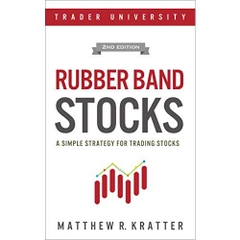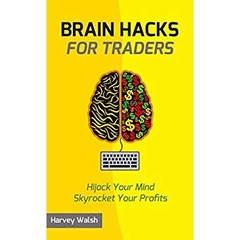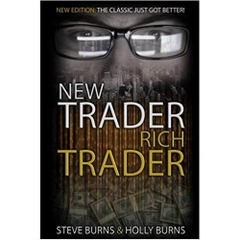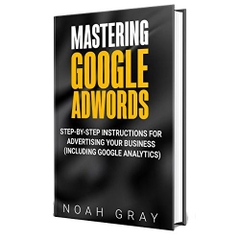-
-
-
Tổng tiền thanh toán:
-
-
Thông tin
-
Tìm sách theo yêu cầu
Book Description
Publication Date: May 1, 1995 | ISBN-10: 0070092516 | ISBN-13: 978-0070092518
Day trading is Wall Street's hottest trend and, in The Complete Guide to Day Trading Stocks, famed futures trader and author Jake Bernstein turns his attention, knowledge, and experience to the exciting world of stock trading. Bernstein covers timing systems, trend following systems, breakout systems, and more -- all illustrated with chart examples based on intra-day time frames, and supported by results from his meticulous, historically accurate back testing.
- Link: http://www.amazon.com/Compleat-Day-Trader-Strategies-Indicators/dp/0070092516
Basic enough for novice traders -- yet with enough detail for the most demanding market veterans -- Bernstein's book gives day traders the tools they need to succeed in this fast-paced, relentless market. Special attention is given to:
-- Day trading the technology sector
-- Risk management and diversification
-- Little-known nuances of order placement.
Editorial Reviews
Amazon.com Review
The emergence of the Internet along with the increased volatility of the financial markets have combined to fuel an explosive growth in the interest and practice of day trading. So it should surprise no one that there's a parallel explosion in the number of books about day trading. Jake Bernstein, who has been involved in the futures industry as an author and trader for some 30 years, adds The Compleat Day Trader to this cadre. It offers a solid introduction to day trading and evaluates various techniques and strategies, including moving averages, intraday application of stochastics, support and resistance, gaps, and scalping. Bernstein spends several chapters discussing trading psychology, and he sees successful traders as developing a balance between technique and "art." He writes:
My experiences as a trader have led me to the conclusion that successful day trading is built upon a unique foundation combining art and science. If pressed to "guesstimate" as to the proper mix of both qualities, I'd say that approximately 70 percent of successful day trading consists of technique or science and 30 percent skill and/or art. This, however, would be a misleading statement inasmuch as both elements are symbiotic; without one, the other would be ineffective. The successful day trader combines both elements synergistically to produce profits, consistency and longevity.As he does in the sequel to this book, The Compleat Day Trader II, Bernstein shows an obvious preference to futures trading, but many of the techniques described should apply to other markets as well. --Harry C. Edwards
From the Back Cover
From the best-selling author of The Investor's Quotient, here is the best new guide to the fast-paced world of day trading. Jake Bernstein, the leading authority on the futures markets, draws on more than 25 years of experience to reveal the ins and outs of day tradig. He shows ou how to master systems...develop strategies...and gather the specialized knowledge and pinpoint timing that can reap huge profits by the close of each day's trading. Whether you're a sophisticated investor or a professional trader, you'll find, in this groundbreaking new book, the highly specific day-trading guidance you've been seekding. You'll also find 100 charts that illustrate key points and patterns. Great day traders are not born great...they're created. Knowledge makes success. The Compleat Day Trader provides that knowledge!
Product Details
- Hardcover: 227 pages
- Publisher: McGraw-Hill Companies (May 1, 1995)
- Language: English
- ISBN-10: 0070092516
- ISBN-13: 978-0070092518
- Product Dimensions: 9.5 x 7.6 x 0.9 inches
- Shipping Weight: 1.3 pounds
- Average Customer Review: 3.3 out of 5 stars See all reviews (48 customer reviews)
- Amazon Best Sellers Rank: #653,866 in Books (See Top 100 in Books)
Most Helpful Customer Reviews
61 of 68 people found the following review helpful
1.0 out of 5 stars A professional trader writes 25 books? October 8, 2000
By Ed Huang
Format:Hardcover
Trading especially short term trading need great concentration and a full-time commitment. Professional traders write few or no book.
Mr. Bernstein's books and articles are everywhere. Sometimes I came across his publications, I scanned through a few pages to see what he had to say about trading. Mr. Bernstein makes statements which are generally safe and easy to say. For example, I read his article the other day. He tells the readers "Do your homework.", "The trend is your friend." etc. Of course, these are the common rules for traders. But what are the concrete steps to implement these rules in the real-life situation? Well, I could hardly find any. On the other hand, he stated in that article: "...I maintain that a good trader can make any system works." I found this statement unprofessional and phony. The reasons:
1. Many systems on the market are just trash and can not be used at all.
2. Good traders wouldn't pick up any system and risk their money with it. Good traders are very selective and only trade a few systems that have proven record and are suitable for their individual styles.
I found similar problems in other works by Mr. Bernstein. Should I bother to buy this book? No, thanks.
I have read books from many different writers and have more than 10 year active trading experience. So I know something.
A few tips(IMO) for choosing good books on trading:
1. Only a small percentage of books on the market are good or great.
2. Popular books are not necessary good books. If you automatically think so, you've probably fallen into "Herd mentality" thinking.
3. Trading is a bottom line business. Find books written by traders who had proven long-term(5 year or more) successful trading records. They are the ones "know how".
4. Be wary of the authors who write many trading books.
Good luck.
Mr. Bernstein's books and articles are everywhere. Sometimes I came across his publications, I scanned through a few pages to see what he had to say about trading. Mr. Bernstein makes statements which are generally safe and easy to say. For example, I read his article the other day. He tells the readers "Do your homework.", "The trend is your friend." etc. Of course, these are the common rules for traders. But what are the concrete steps to implement these rules in the real-life situation? Well, I could hardly find any. On the other hand, he stated in that article: "...I maintain that a good trader can make any system works." I found this statement unprofessional and phony. The reasons:
1. Many systems on the market are just trash and can not be used at all.
2. Good traders wouldn't pick up any system and risk their money with it. Good traders are very selective and only trade a few systems that have proven record and are suitable for their individual styles.
I found similar problems in other works by Mr. Bernstein. Should I bother to buy this book? No, thanks.
I have read books from many different writers and have more than 10 year active trading experience. So I know something.
A few tips(IMO) for choosing good books on trading:
1. Only a small percentage of books on the market are good or great.
2. Popular books are not necessary good books. If you automatically think so, you've probably fallen into "Herd mentality" thinking.
3. Trading is a bottom line business. Find books written by traders who had proven long-term(5 year or more) successful trading records. They are the ones "know how".
4. Be wary of the authors who write many trading books.
Good luck.
26 of 28 people found the following review helpful
4.0 out of 5 stars For hardcore day traders, and straight to the point October 7, 2000
By +++
Format:Hardcover
Most books for "day traders" are so general that their techniques and advice can be successfully used by swing-traders (those who keep stocks for several days), and even by longer-term investors. This one is different. The author, Jake Bernstein, strongly advocates real day trading, when no securities ever kept overnight. Therefore, his techniques are usable for very short term trading only.
The advantage of this book is that it has very little general rhetoric and comes straight to the point, that is to the techniques which the author finds profitable. Basically, 90% of the book is about the use of technical indicators (such as various moving averages and oscillators) to determine potentially profitable entry and exit points. The topics discussed in particular detailed manner are the use of moving averages, stochastic indicator, moving average channel (MAC), relative strength index (RSI), momentum, and techniques for trading of opening gaps. The author also suggests several oscillators of his own. However, despite the simplicity of these indicators, one has to own software such as Omega Research Trade Station to calculate and plot these home-made oscillators in real time, or write a program yourself. There are also several chapters applicable to futures only (actually, the whole book is about trading in the futures market, but 95% of techniques are equally applicable to stocks).
The great advantage of the book is that it is very specific, clearly illustrated, and gives plenty of detailed technical advice and a number of potentially profitable trading techniques. Be advised, however, that those who are interested in trading but do not have enough capital to take profits from half-a-tick changes (and I, too, belong to this group) cannot really take advantage of this book. No trend and no trade longer than a few hours is discussed there! Therefore, this book is for the serious day traders, and only for them. If you are a day trader, this book is a must; if you are not, do not bother buying it but rather consider other options, e.g., the excellent book "How to get started in electronic day trading" by D.S.Nassar which is good for traders on any time frame.
The advantage of this book is that it has very little general rhetoric and comes straight to the point, that is to the techniques which the author finds profitable. Basically, 90% of the book is about the use of technical indicators (such as various moving averages and oscillators) to determine potentially profitable entry and exit points. The topics discussed in particular detailed manner are the use of moving averages, stochastic indicator, moving average channel (MAC), relative strength index (RSI), momentum, and techniques for trading of opening gaps. The author also suggests several oscillators of his own. However, despite the simplicity of these indicators, one has to own software such as Omega Research Trade Station to calculate and plot these home-made oscillators in real time, or write a program yourself. There are also several chapters applicable to futures only (actually, the whole book is about trading in the futures market, but 95% of techniques are equally applicable to stocks).
The great advantage of the book is that it is very specific, clearly illustrated, and gives plenty of detailed technical advice and a number of potentially profitable trading techniques. Be advised, however, that those who are interested in trading but do not have enough capital to take profits from half-a-tick changes (and I, too, belong to this group) cannot really take advantage of this book. No trend and no trade longer than a few hours is discussed there! Therefore, this book is for the serious day traders, and only for them. If you are a day trader, this book is a must; if you are not, do not bother buying it but rather consider other options, e.g., the excellent book "How to get started in electronic day trading" by D.S.Nassar which is good for traders on any time frame.
XEM CHI TIẾT TẠI AMAZON.COM
- Thông tin chi tiết
- Mục lục
- Đánh giá & bình luận của người mua
- Những cuốn sách cùng chủ đề hoặc có liên quan
Tại web chỉ có một phần nhỏ các đầu sách đang có nên nếu cần tìm sách gì các bạn có thể liên hệ trực tiếp với Thư viện qua Mail, Zalo, Fanpage nhé
Đăng ký nhận tin qua email
Hãy đăng ký ngay hôm nay để nhận được những tin tức cập nhật mới nhất về sản phẩm và các chương trình giảm giá, khuyến mại của chúng tôi.












